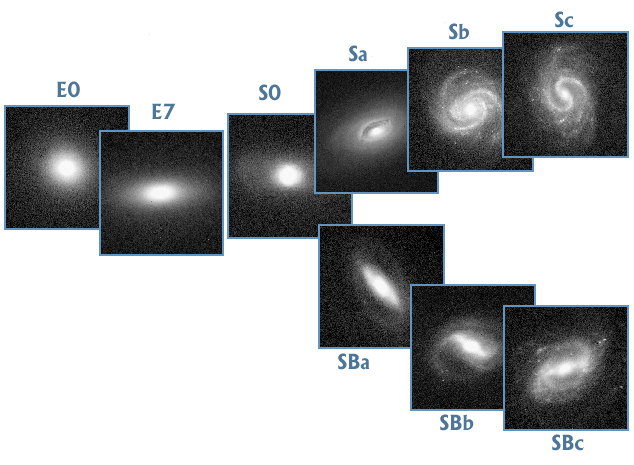JBO Lensing Group - Research Areas
CLASS/Lens SearchesMuch of the group's work is connected with the CLASS lens search. Work on the CLASS database continues at the present time, although the data collection, selection and calibration has been completed. Members of the group use CLASS in areas such as:
The successor lens search to CLASS will take advantage of upgraded instruments, such as EVLA and e-MERLIN. A survey using these super-sensitive interferometers could find many more lenses than the 60+ known today. A larger sample of lens systems will reduce uncertainties in estimates of cosmological parameters derived from lensing statistics. | ||
Lens StatisticsLensing statistics can be used to estimate the values of the matter density and the cosmological constant. These cosmological parameters underpin both the large-scale geometry and the expansion history of the universe. Since the number of lenses we expect to see depends on the large-scale geometry, we can use the number of lenses found in a survey to constrain the geometry of the universe. In practice, there are still too few lenses known to provide reliable constraints on the cosmological parameters, which is a major reason for doing more lens surveys. | ||
Mass Modelling of Strong LensesThe image positions, flux ratios and other information derived from observations of a lens system can be used to constrain the mass distribution of the system's lensing galaxy. Gravitational lensing is an excellent probe of galaxy mass distributions at cosmological distances, where methods useful for nearby galaxies are ineffective. Further, lensing is sensitive to the total mass distribution (dark matter + luminous matter), unlike other techniques which are sensitive only to luminous matter. If a suitable mass model of a lensing galaxy is obtained, and the lensed source varies in brightness with time, the lens system can be used to estimate Hubble's constant. Hubble's constant is extremely important in cosmology, since it appears in expressions for many of the most important cosmological problems - knowing Hubble's constant accurately allows us to determine the age of the universe. Some lens systems are unsuitable for use in the determination of Hubble's constant, because the lensed source is not variable or because the lensing of the source is due to a complex arrangement of galaxies that make the system difficult to model. Larger surveys that find more lenses are the obvious solution to this problem, since we then have a larger selection of systems that could be used to determine Hubble's constant. | ||
Galaxy FormationGalaxy formation is one of the most active research areas in astrophysics. In standard hierarchical models dissipationless dark matter aggregates into larger and larger clumps as gravitational instability amplifies the weak density perturbations produced at early times. Gas associated with such dark haloes cools and condenses within them, eventually forming the luminous galaxies we see today.  Image Copyright © 1999 by Princeton University Press There are still many unanswered questions in galaxy formation, including even the most basic questions such as the origin of the Hubble sequence of galaxies. Active research is being conducted at JBO on the formation of disk galaxies, the hot (X-ray) haloes of galaxies and the feedback effects during early phases of galaxy assembly. |
||
MicrolensingMicrolensing is gravitational lensing in motion. Unlike strong lensing where the images are usually resolvable, microlensing images are of milli-arcsecond separation for microlensing in the local group and hence currently unresolvable. However, since the system is in motion, what is observed is a temporary brightening, and the study of the resulting light curves is proving to be an exciting and stimulating area of research. Here at Jodrell bank we are mainly interested in microlensing within our own Galaxy (although microlensing itself is not restricted to Galactic distances, e.g., observations are carried out using the LMC, the Andromeda galaxy M31, and even distant quasars). To date more than 1000 microlensing events have been seen toward the Galactic bulge, and this number is increasing daily. The most important advancement in recent years is the advent of real-time microlensing detections, where events can be studied as they are happening (see, for example, the OGLE Early Warning System).
The analysis of these microlensing light curves has many uses, since it is one of the only ways to probe objects (in the form of the intervening lenses) which do not necessarily have to be luminous. Obviously this is a distinct advantage, and may soon result in direct detections of isolated stellar mass black holes in our Galaxy. Indeed, some may already have been identified (see the above figure for one such example). Galactic Microlensing can also be used to study the kinematics of the disk and bulge, since the analysis of microlensing statistics becomes more important as the number of detected events rises. In fact, one of the most exciting problems in microlensing is the explanation as to why there seem to be many more detected events toward the Galactic bulge than the standard models of our Galaxy predict. |
